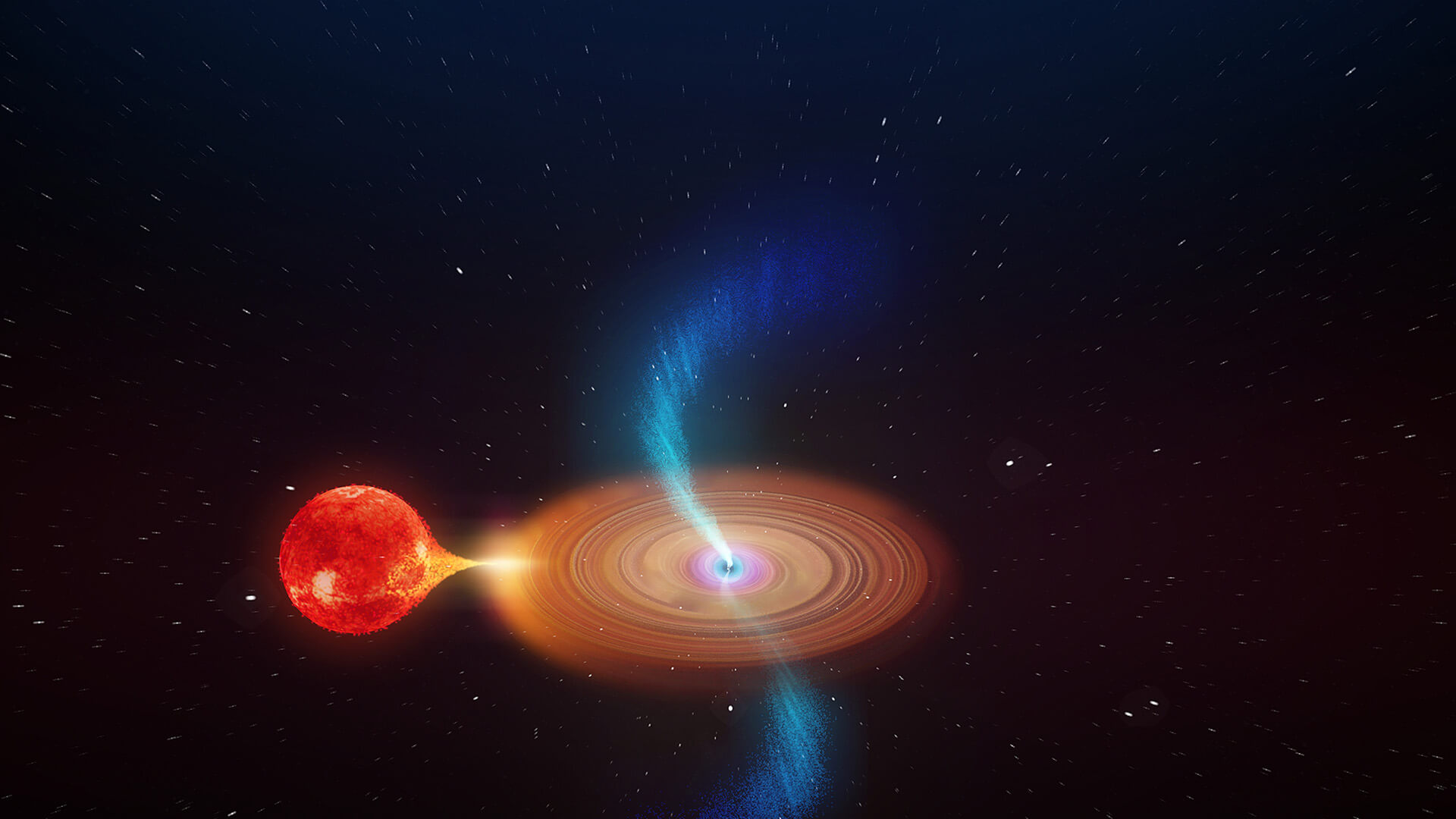Watching a black hole absorbing a star, astronomers first saw how the jets of ejected substance repeatedly changed their direction during very short periods of time, the best explanation of which is the involvement of the surrounding space-time by a gravitational monster in rotation.
The aim of the team’s research was the V404 Cygni system, approximately 8 thousand light-years distant from Earth in the direction of the constellation Cygni. It consists of a black hole, which, being 9 times “heavier” than the Sun, gradually destroys a star with a mass of 2/3 of the sun.
We have never seen jets of black holes change their direction in such a short time.
-James Miller-Jones, lead author of the study at Curtin University (Australia)
V404 Cygni attracted astronomers back in 1938 thanks to a bright flash, for which it was assigned to variable stars. Then similar events were observed in 1956 and 1989. The system became widely known in 2015, when the NASA satellite Swift recorded the resumption of its activity. In the same year, an array of 10 Very Long Baseline Array (VLBA) radio telescopes joined the observations, which together form a telescope the size of a continent.
In the process of dragging a matter around a black hole from a companion, a rotating accretion disk is formed, which becomes denser and hotter as it approaches the event horizon. In addition, such systems are characteristic of jets, originating either in the innermost part of the disk, or in a black hole. In this case, matter breaks out into space at a speed of about 60% of the speed of light.
Usually jets shoot from the poles of black holes, without changing their direction for short periods of time. However, this is not the case with the V404 Cygni system, and astronomers have an explanation for this.
According to Albert Einstein’s General Theory of Relativity, rotating massive objects, such as black holes, can involve the space-time surrounding them in rotation, an effect known as dragging inertial reference systems (the Lenze-Thirring effect). This is exactly what, according to scientists, managed to be seen in V404 Cygni thanks to a new technique, including taking pictures of an object with an “exposure” of only 70 seconds, and not a few hours, and the successful architecture of the system itself.
In V404 Cygni, the axis of rotation of a black hole is offset relative to the plane of the orbit of a companion star. This leads to the fact that the effect of dragging inertial reference systems deforms the inner part of the disk, and then pulls it along. Since the jets originate either from the internal disk or from the black hole, this changes their orientation, causing oscillations, which the VLBA recorded. This is the only mechanism we can offer to explain the fast precession observed in V404 Cygni.
-James Miller-Jones
Based on the calculations, astronomers found that while the V404 Cygni accretion disk has a width of about 10 million kilometers, only its internal area several thousand kilometers long is bent, which, in addition, also swells under the influence of radiation pressure, taking the form of a donut.
We were stunned by what we saw in this system. It was completely unexpected! The discovery of this astronomical information has deepened our understanding of how black holes can influence the evolution of galaxies.
-Greg Sivakov, co-author of a study from the University of Alberta (Canada).
The post A black hole rotating space appeared first on Upcosmos.com.
